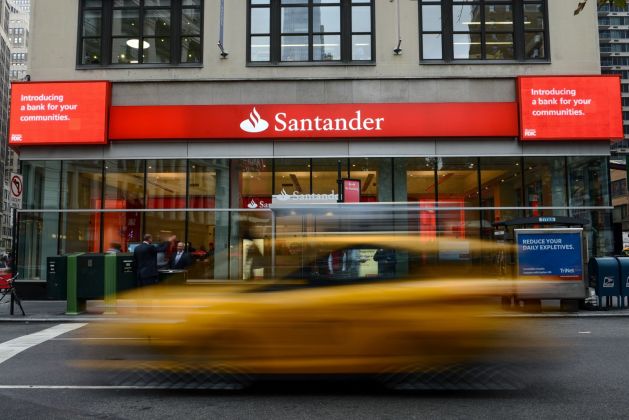Fed Governor Stephen Miran Predicts December Rate Cut
Federal Reserve Governor and Bitcoin advocate Stephen Miran has expressed expectations for another interest rate reduction in December, signaling potential monetary policy easing that could impact cryptocurrency markets.
Miran's Rate Cut Expectations
Stephen Miran, a Federal Reserve Governor known for his supportive stance on Bitcoin and digital assets, publicly stated his anticipation of an additional rate cut during the Federal Reserve's December policy meeting. This projection comes as the central bank navigates complex economic conditions balancing inflation concerns with growth objectives.
Miran's comments carry significant weight given his position within the Federal Reserve system and his unique perspective as one of the few policymakers openly favorable toward cryptocurrency adoption. His dual focus on monetary policy and digital asset innovation provides a distinctive viewpoint on how traditional finance and crypto markets intersect.
The expectation of a December rate cut suggests Miran believes current economic data supports further monetary accommodation. Interest rate decisions profoundly influence asset markets, including cryptocurrencies, as lower rates typically reduce the opportunity cost of holding non-yielding assets like Bitcoin.
Economic Context for Rate Decisions
The Federal Reserve has been adjusting its monetary policy stance throughout 2025 in response to evolving economic indicators. Inflation rates, employment data, GDP growth, and financial market conditions all factor into the central bank's interest rate determinations.
Recent inflation readings have shown moderation from peak levels, though prices remain above the Fed's 2% target. Employment markets have demonstrated resilience with steady job creation, while wage growth has stabilized. These conditions create room for potential rate adjustments without risking runaway inflation.
Global economic uncertainties, including geopolitical tensions and international trade dynamics, also influence Federal Reserve policy decisions. Central banks worldwide are coordinating responses to shared economic challenges, with rate policies affecting cross-border capital flows and currency valuations.
Implications for Cryptocurrency Markets
Interest rate changes directly impact cryptocurrency valuations through multiple channels. Lower rates reduce yields on traditional safe assets like government bonds, potentially increasing investor appetite for alternative assets including digital currencies.
Bitcoin and other cryptocurrencies often exhibit inverse correlations with interest rates during certain market phases. When rates decline, liquidity conditions generally improve, supporting risk asset prices. However, the relationship remains complex and influenced by numerous additional factors beyond monetary policy alone.
Institutional investors increasingly view Bitcoin as a portfolio diversification tool and potential inflation hedge. Rate cut expectations may reinforce allocation decisions favoring cryptocurrency exposure, particularly if traditional fixed-income returns diminish.
Market participants closely monitor Federal Reserve communications for signals about future policy direction. Miran's comments provide one data point among many that traders analyze when positioning portfolios across asset classes.
Miran's Bitcoin Advocacy Background
Stephen Miran has distinguished himself among Federal Reserve officials through his openness to Bitcoin and blockchain technology. While maintaining focus on his monetary policy responsibilities, he has acknowledged cryptocurrency's role in financial innovation and evolution.
His perspective contrasts with some traditional central bankers who have expressed skepticism about decentralized digital currencies. Miran recognizes that technological advancement and financial system modernization require understanding emerging asset classes and payment mechanisms.
This balanced approach—combining conventional monetary policy expertise with awareness of digital asset trends—positions Miran as a unique voice within Federal Reserve circles. His views may influence how the central bank approaches cryptocurrency regulation and integration into the broader financial system.
However, Miran's personal views on Bitcoin do not necessarily translate into Federal Reserve policy positions. The central bank maintains institutional processes for policy development that incorporate diverse perspectives from multiple governors and regional presidents.
Federal Reserve Decision-Making Process
Interest rate decisions emerge from Federal Open Market Committee (FOMC) meetings where voting members evaluate economic conditions and debate appropriate policy responses. The committee includes Federal Reserve Board governors and rotating regional bank presidents.
Each FOMC meeting involves extensive economic analysis, staff presentations, and deliberative discussions before reaching consensus on rate adjustments. Individual governors like Miran contribute their perspectives, but final decisions reflect collective judgment.
Market expectations for rate changes are typically priced into asset valuations before formal announcements. Traders analyze economic data releases, Fed official speeches, and meeting minutes to anticipate policy shifts and adjust positions accordingly.
The December FOMC meeting will follow standard procedures with economic projections, policy statements, and a press conference explaining the committee's rationale. Miran's expectations may align with final outcomes, though surprises occasionally occur when data evolves unexpectedly.
Historical Rate Cut Patterns
Examining previous Federal Reserve rate cut cycles provides context for understanding potential December actions. The central bank typically adjusts rates in 25 basis point increments, though larger moves occur during crisis periods.
Recent rate adjustment patterns have reflected data-dependent approaches rather than predetermined paths. The Fed emphasizes flexibility to respond to changing economic conditions rather than committing to fixed timelines.
Cryptocurrency markets have shown varied responses to historical rate cuts. During some periods, Bitcoin rallied following rate reductions as investors sought alternative stores of value. Other instances saw muted reactions or even declines amid broader risk-off sentiment.
The relationship between monetary policy and crypto valuations continues evolving as the asset class matures and institutional participation increases. Current market structures differ significantly from earlier periods, potentially altering how Bitcoin responds to rate changes.
Market Reaction to Miran's Comments
Financial markets monitor Federal Reserve official statements for policy signals, though individual governor comments don't always predict final committee decisions. Miran's rate cut expectation adds to the chorus of voices shaping market sentiment around December's meeting.
Bitcoin prices showed modest movement following Miran's comments, suggesting traders had already incorporated rate cut expectations into valuations. Options markets and futures positioning indicate substantial anticipation of monetary easing.
Equity markets demonstrated positive responses to rate cut prospects, with growth-oriented sectors particularly benefiting from lower discount rates. Bond yields adjusted downward, reflecting market expectations of reduced future interest rates.
Currency markets also reacted, with the US dollar experiencing modest weakness against major peers. Dollar depreciation can benefit Bitcoin by making the cryptocurrency relatively more attractive to international investors.
Inflation Considerations
Despite rate cut expectations, inflation remains a central consideration for Federal Reserve policy. The central bank must balance growth support against price stability mandates enshrined in its dual objectives.
Current inflation metrics show divergence between headline and core measures, with energy and food prices exhibiting volatility while underlying inflation trends more stable. The Fed focuses primarily on core inflation when assessing persistent price pressures.
Some analysts worry that premature rate cuts could reignite inflation if economic demand remains robust. Others argue that current inflation levels justify modest easing to support employment objectives without risking price destabilization.
Bitcoin supporters often cite inflation concerns as justification for cryptocurrency adoption. The fixed supply schedule of Bitcoin contrasts with fiat currency creation, appealing to investors seeking protection against monetary debasement.
Employment Market Dynamics
Labor market conditions significantly influence Federal Reserve rate decisions. Strong employment with moderate wage growth creates favorable conditions for potential rate cuts without overheating concerns.
Recent job reports have shown consistent hiring across sectors, though growth rates have moderated from pandemic recovery peaks. Unemployment remains near historic lows while labor force participation has improved.
Wage inflation has stabilized at levels consistent with the Fed's inflation target when accounting for productivity growth. This balance suggests labor markets are neither too tight nor too loose, supporting policy flexibility.
Employment strength provides economic resilience that could accommodate modest rate reductions without triggering excessive demand-pull inflation. The Fed's dual mandate explicitly incorporates maximum employment alongside price stability.
Global Monetary Policy Coordination
Federal Reserve decisions occur within a global context where major central banks influence each other's policy choices. The European Central Bank, Bank of Japan, and other institutions face similar challenges balancing growth and inflation.
International rate differentials affect capital flows and exchange rates, creating spillover effects across economies. When the Fed cuts rates while other central banks maintain higher rates, dollar weakness typically results.
Cryptocurrency markets operate globally, making them sensitive to international monetary policy coordination. Bitcoin trading occurs 24/7 across worldwide exchanges, incorporating diverse regional economic conditions into price discovery.
Coordinated global easing could create particularly favorable conditions for Bitcoin and alternative assets by increasing overall liquidity in financial systems. Conversely, divergent policies might generate volatility as capital flows shift between jurisdictions.
Technical Analysis Perspective
From a technical standpoint, Bitcoin's price action ahead of potential rate cuts shows consolidation near key levels. Support and resistance zones identified by traders will likely be tested as policy announcements approach.
Trading volume patterns suggest accumulation by longer-term holders despite short-term price fluctuations. On-chain metrics indicate reduced selling pressure from experienced Bitcoin investors anticipating favorable macro conditions.
Correlation analysis between Bitcoin and traditional risk assets has fluctuated, with periods of high correlation alternating with independent price action. Rate cut expectations may strengthen Bitcoin's correlation with equity markets if both respond positively to monetary easing.
Options markets show elevated implied volatility around FOMC meeting dates, reflecting uncertainty about policy outcomes and subsequent market reactions. Traders position for potential breakouts in either direction depending on the Fed's ultimate decision and guidance.
Investment Strategy Considerations
Investors incorporating rate cut expectations into portfolio strategies should maintain balanced perspectives recognizing that monetary policy represents just one factor among many influencing asset prices.
Diversification across asset classes, geographies, and investment styles provides resilience against unexpected policy outcomes or market reactions. Over-concentration in any single asset based on rate predictions carries significant risk.
Bitcoin allocation decisions should reflect individual risk tolerance, investment timeframes, and overall financial objectives rather than short-term policy speculation. Long-term cryptocurrency investors often emphasize fundamental adoption trends over macro timing.
Risk management through position sizing, stop-loss disciplines, and periodic rebalancing helps protect capital during volatile periods surrounding policy announcements. Market reactions to Fed decisions can be swift and sometimes counterintuitive.
Future Policy Outlook
Beyond December's anticipated rate cut, longer-term monetary policy trajectories remain uncertain and dependent on evolving economic data. The Federal Reserve emphasizes flexibility rather than predetermined paths.
Economic growth sustainability, inflation persistence, financial stability risks, and international developments will all influence future rate decisions. The Fed's commitment to data-driven policy means projections can change as conditions evolve.
Cryptocurrency's role in the financial system continues expanding regardless of near-term rate movements. Blockchain innovation, institutional adoption, and regulatory framework development proceed on timelines partially independent of monetary policy cycles.
Bitcoin's long-term value proposition centers on decentralization, scarcity, and censorship resistance rather than interest rate sensitivity. While macro conditions influence short-term prices, fundamental characteristics drive sustained adoption.
Conclusion
Stephen Miran's expectation of a December rate cut provides insight into Federal Reserve policy thinking from a governor uniquely positioned at the intersection of traditional finance and cryptocurrency advocacy. His perspective adds to market expectations around monetary easing.
Interest rate decisions profoundly influence financial markets including cryptocurrencies, though relationships between policy and prices remain complex and multifaceted. Bitcoin's response to rate cuts depends on numerous factors beyond monetary policy alone.
Investors should approach policy-driven investment decisions with careful analysis, appropriate risk management, and alignment with long-term financial objectives. While rate cuts may create favorable conditions for Bitcoin, no single factor guarantees price appreciation.
As monetary policy evolves alongside cryptocurrency market maturation, understanding these dynamics becomes increasingly important for market participants. Miran's comments remind investors that traditional financial policy remains relevant even in the decentralized digital asset era.
You May Also Like

Spanish Banking Powerhouse Santander Opens Doors To Crypto For The Public

JPMorgan: Bitcoin Surpasses Gold as Preferred Investment After Deleveraging
